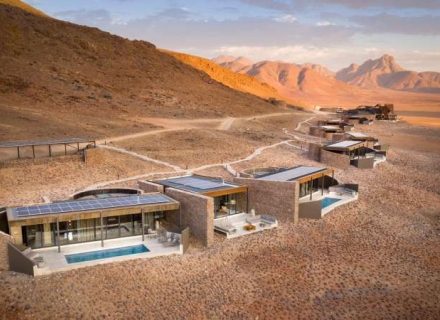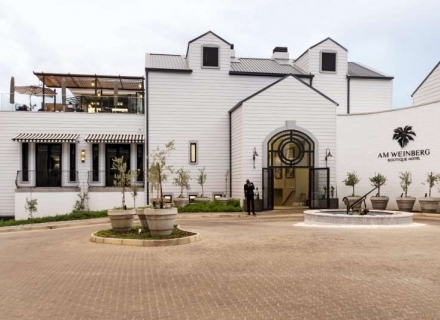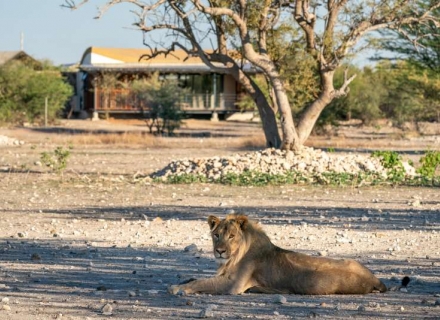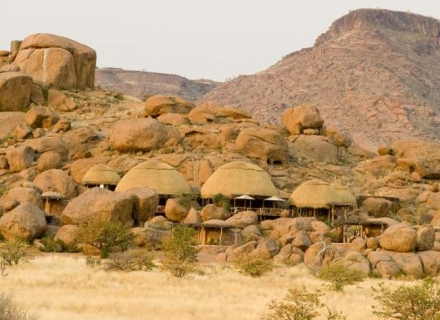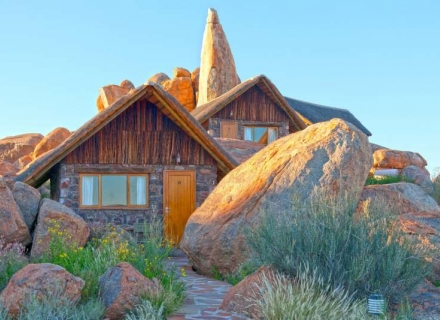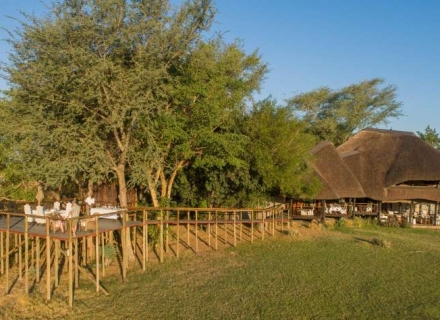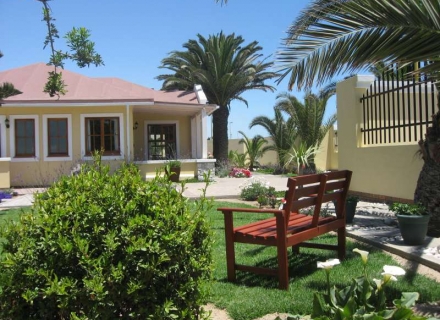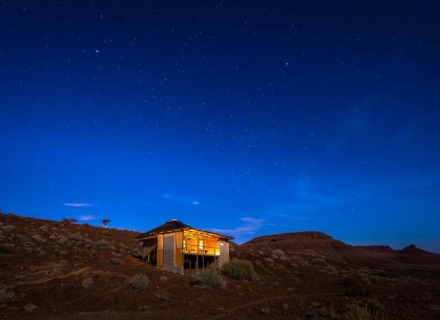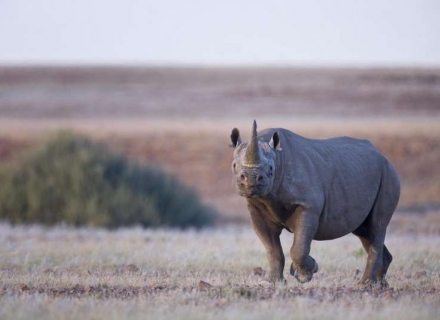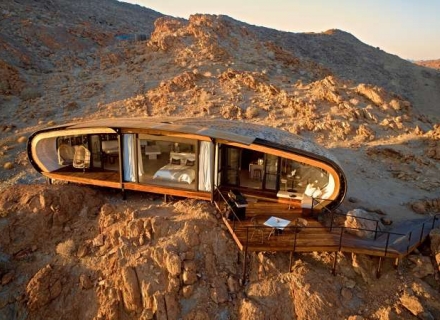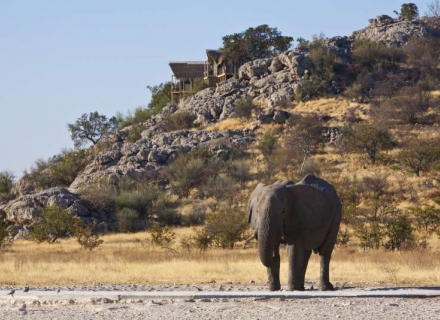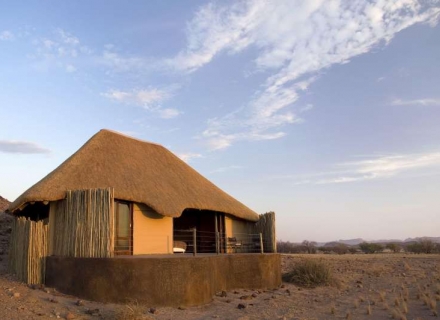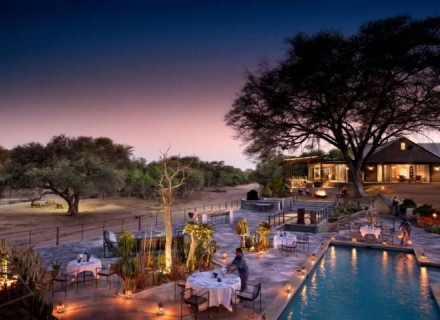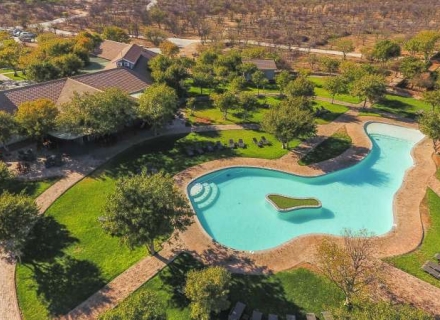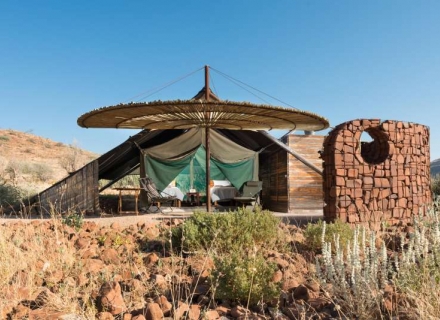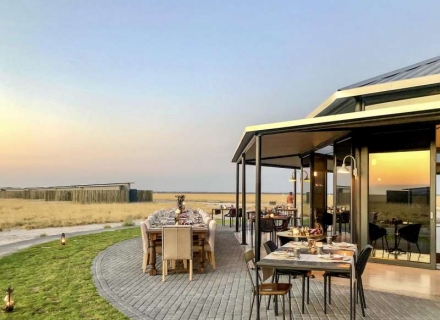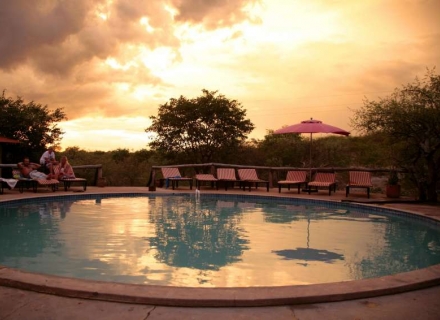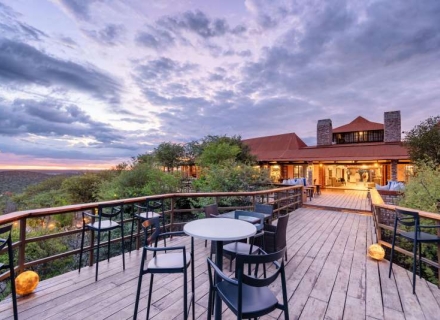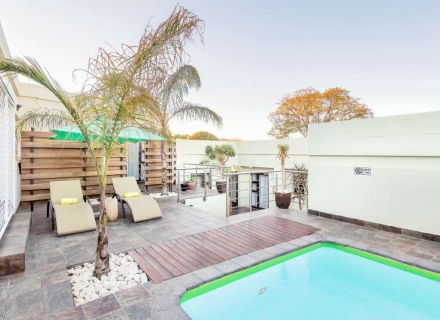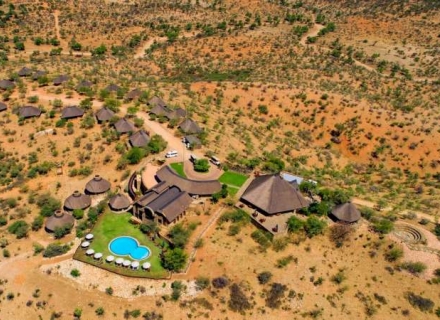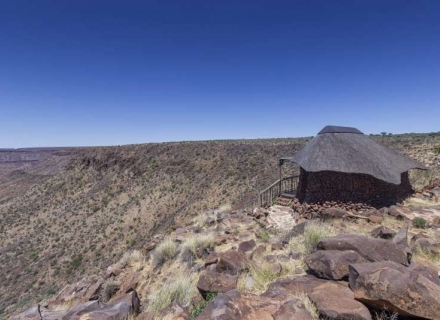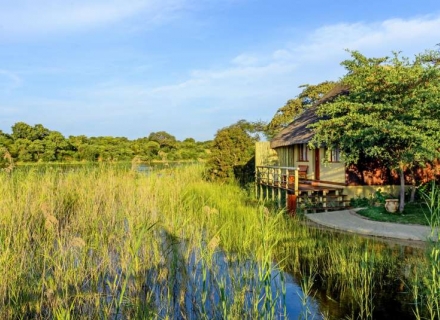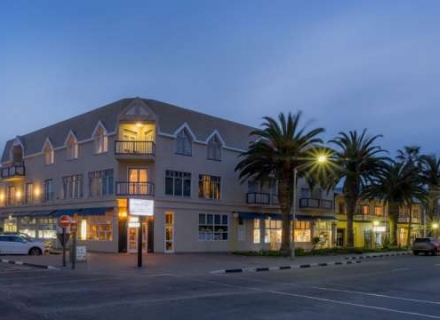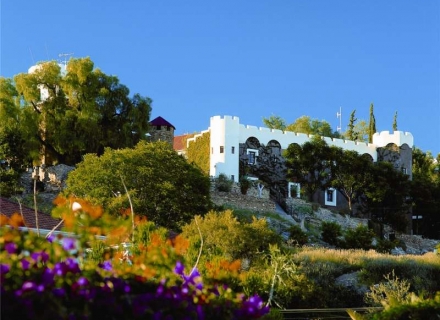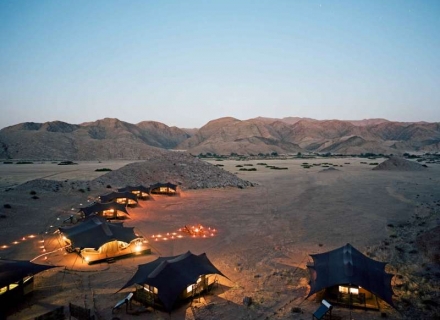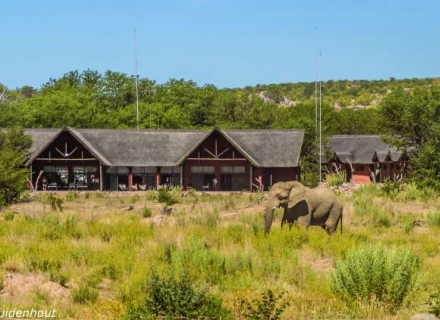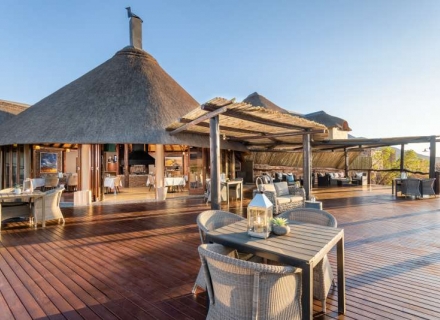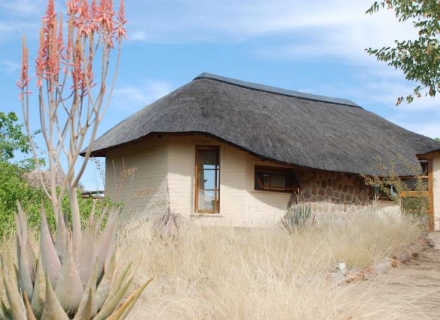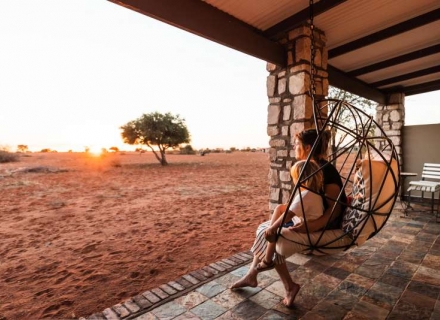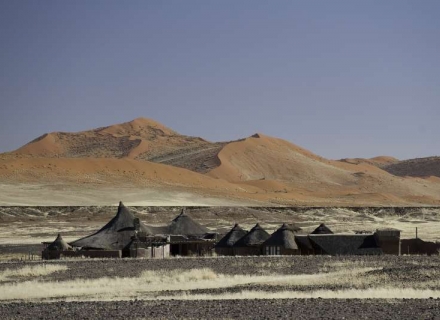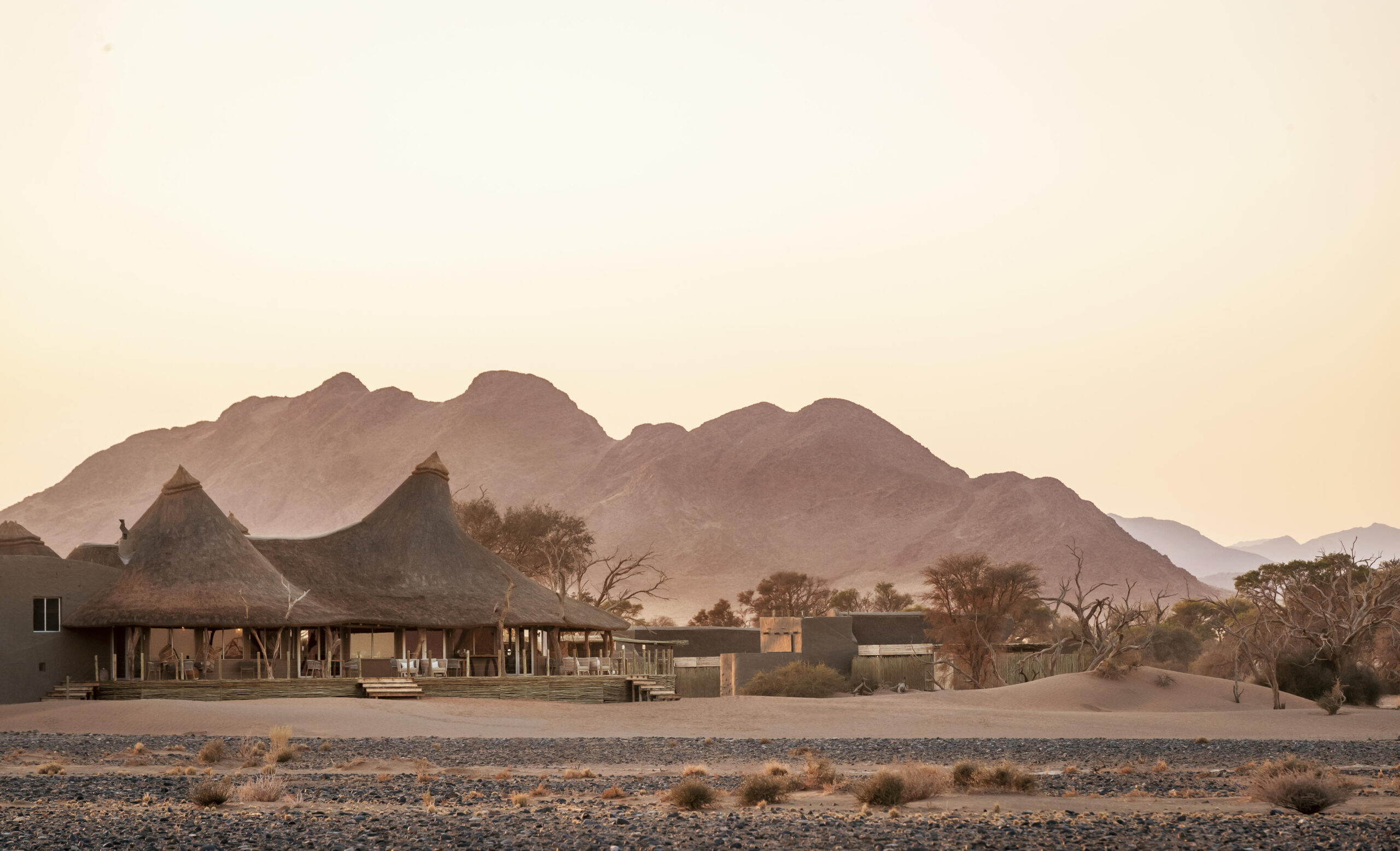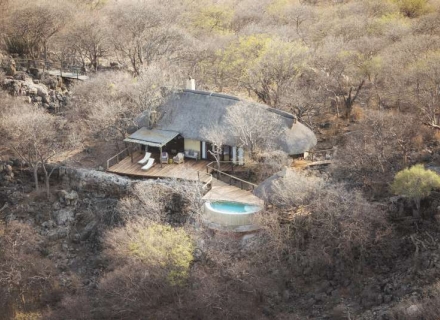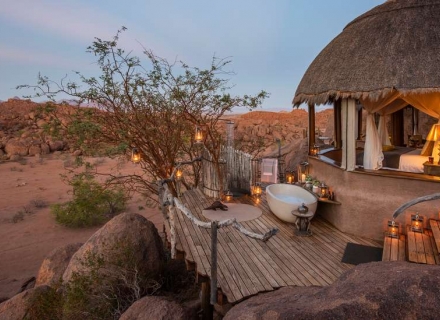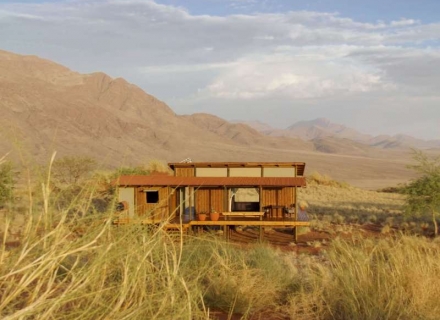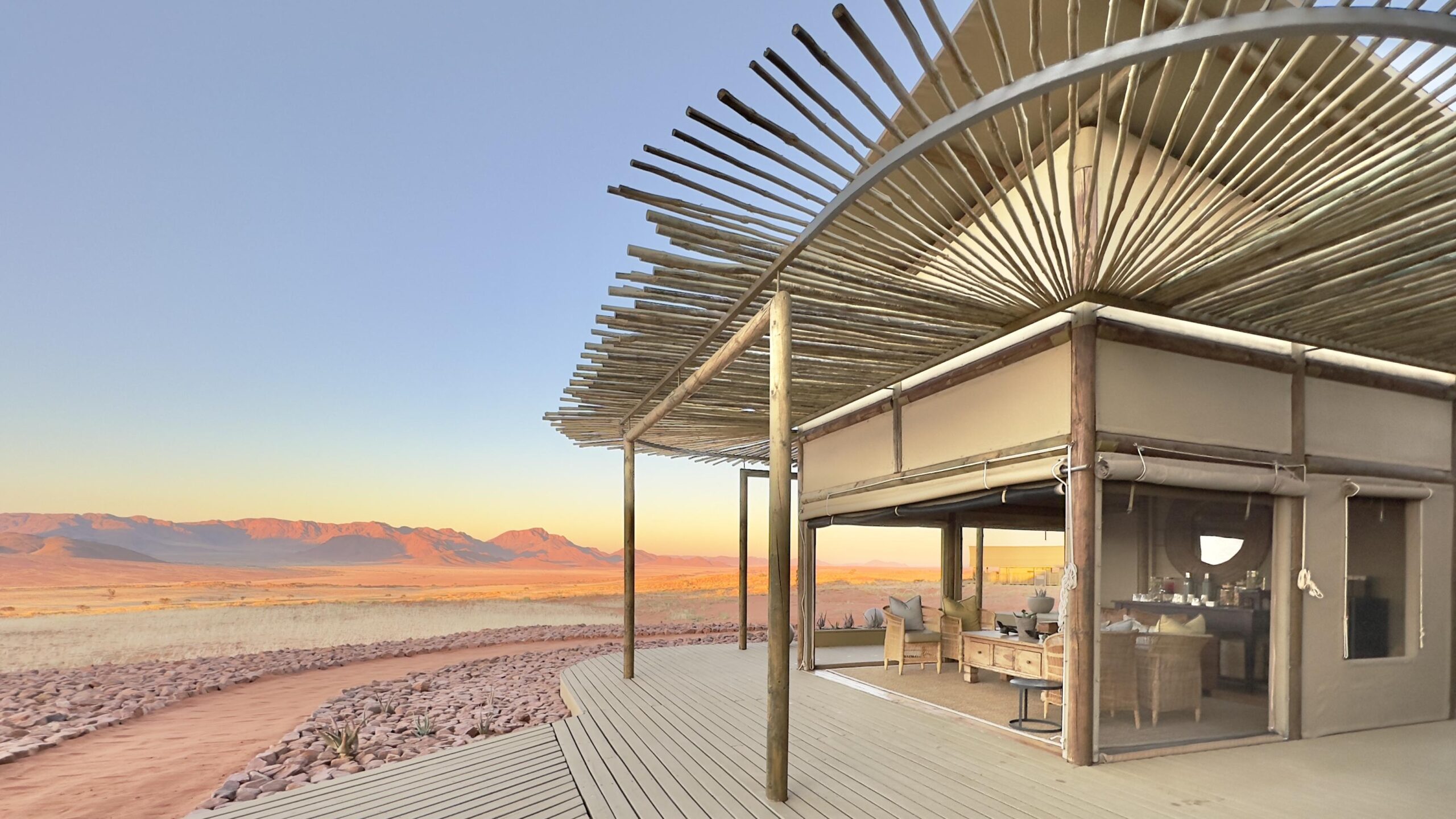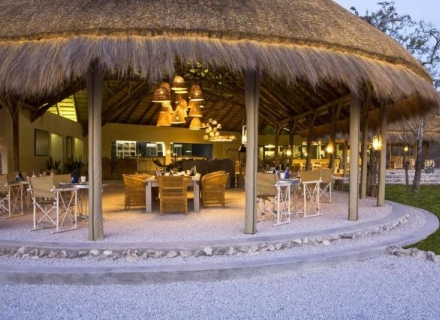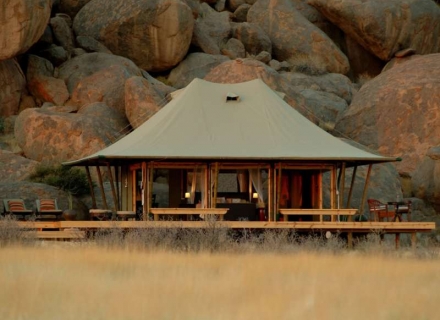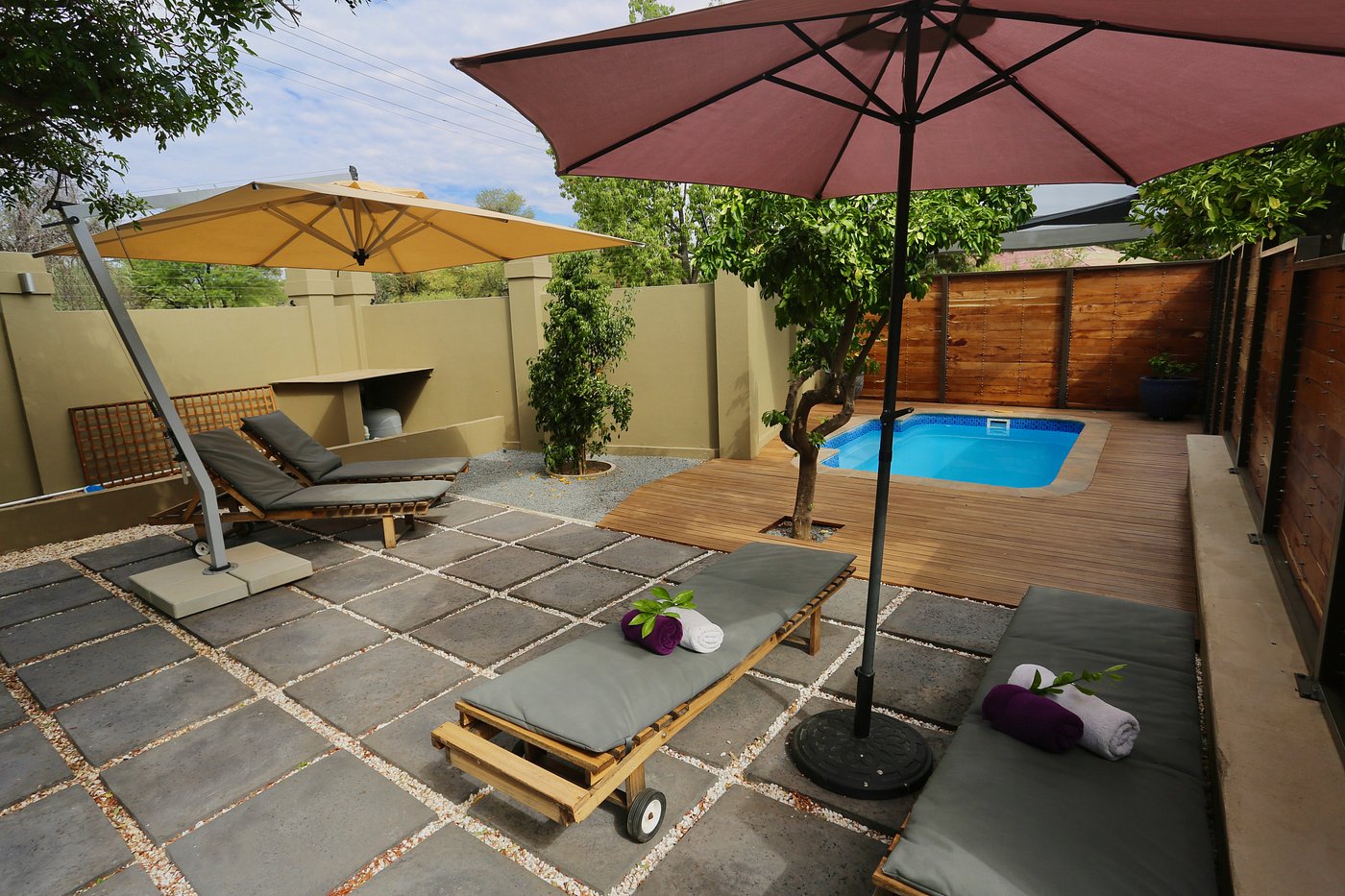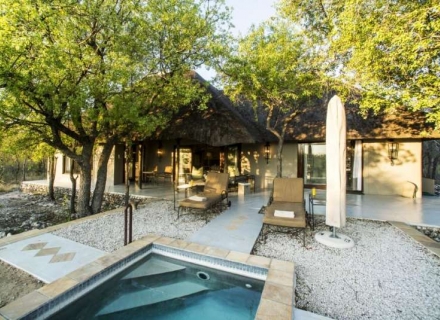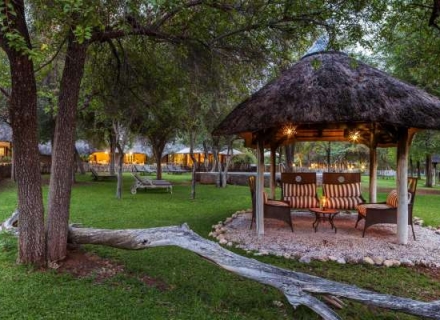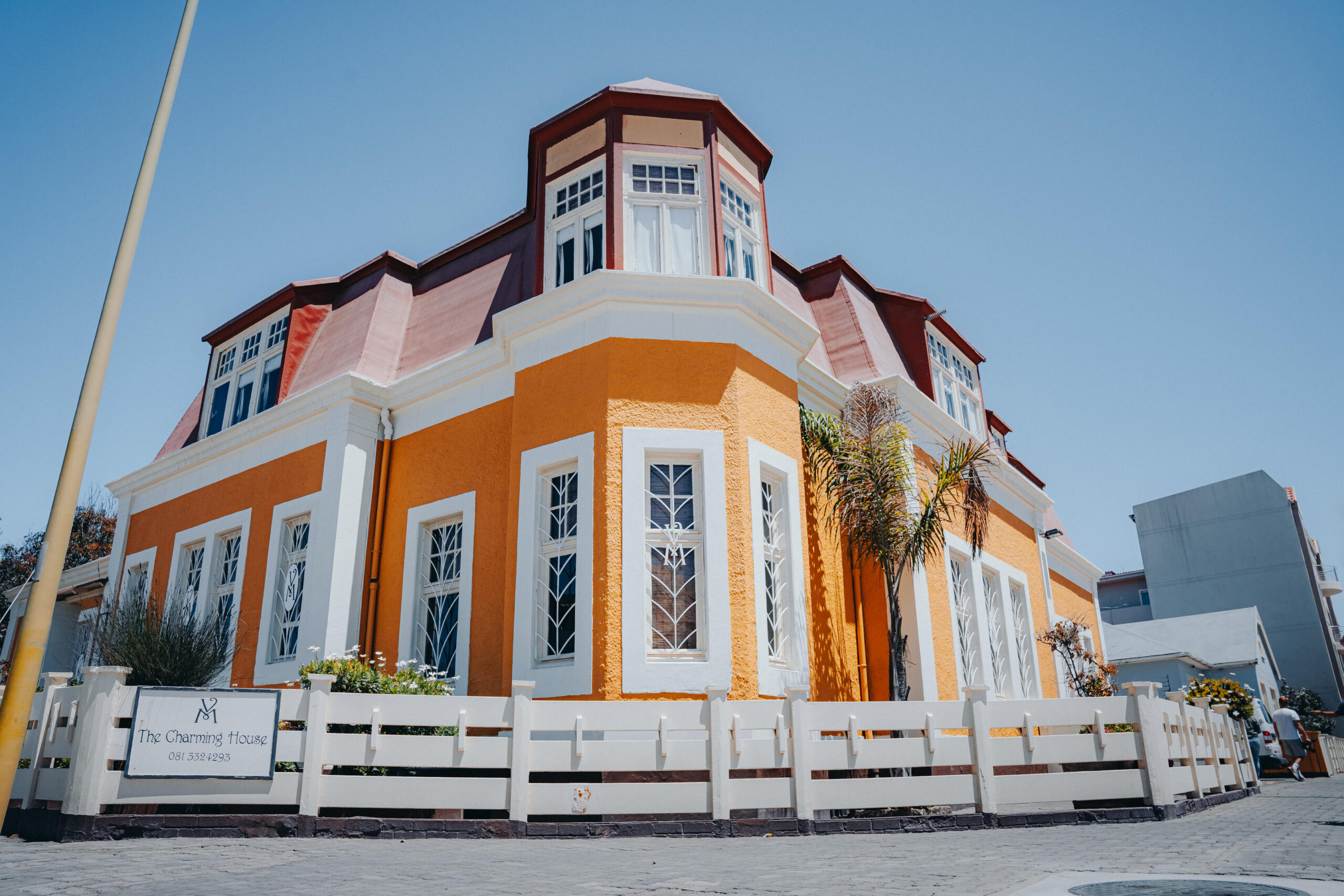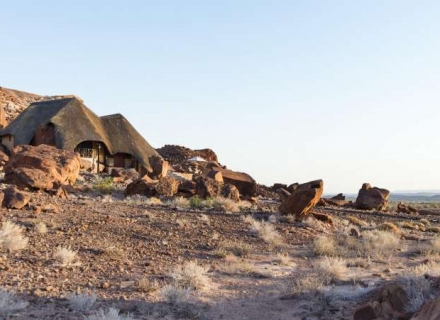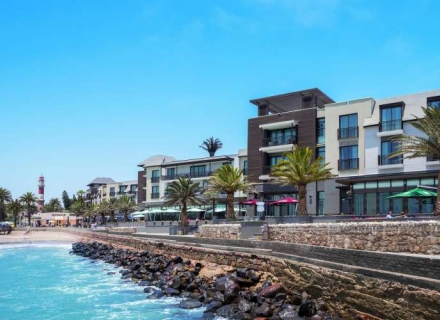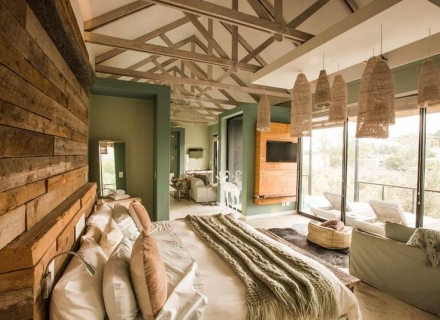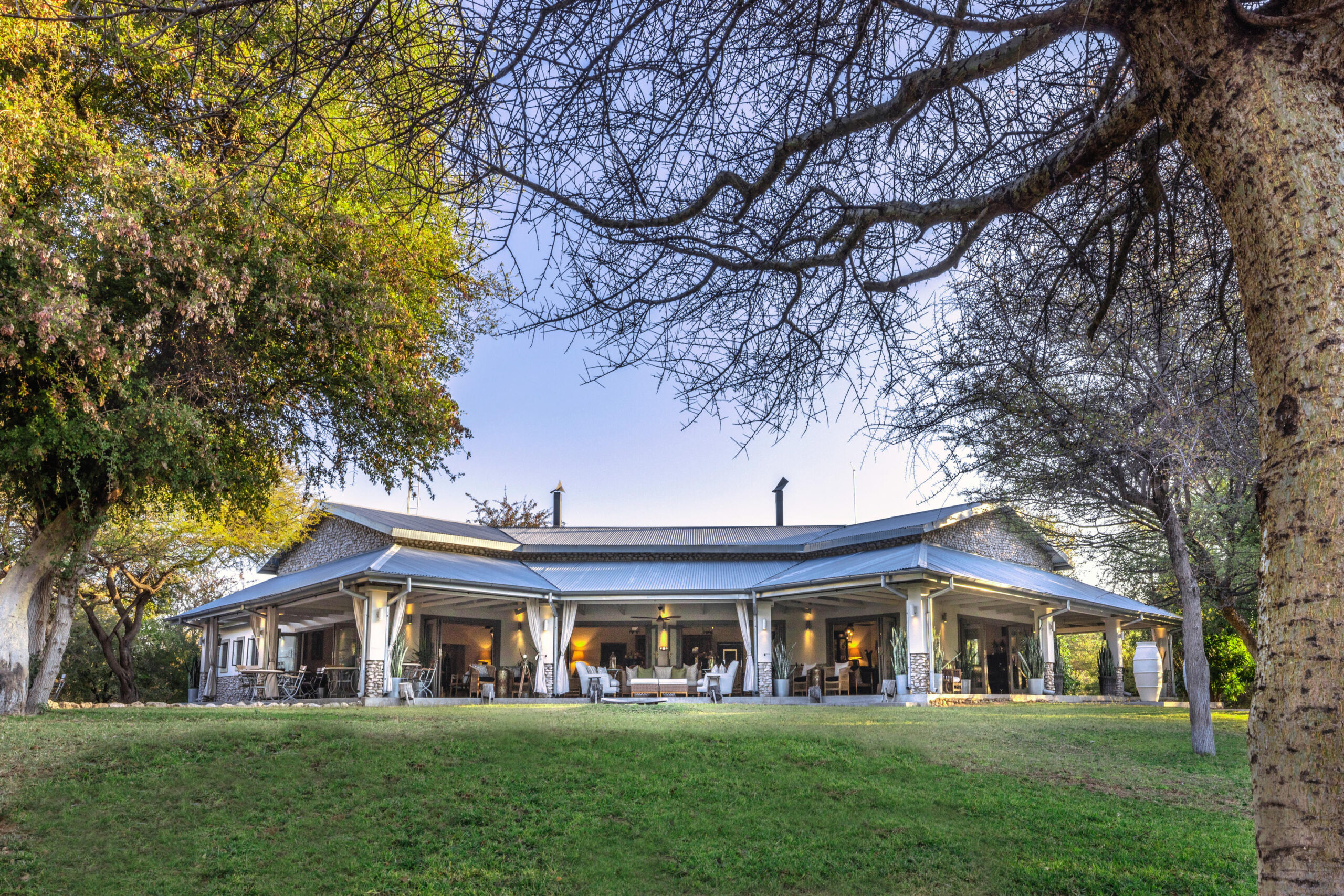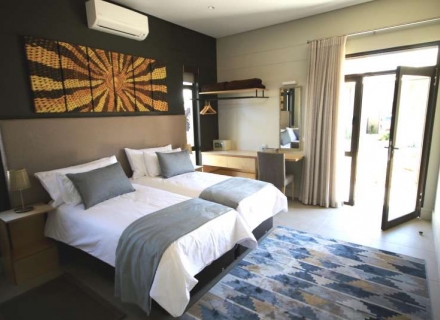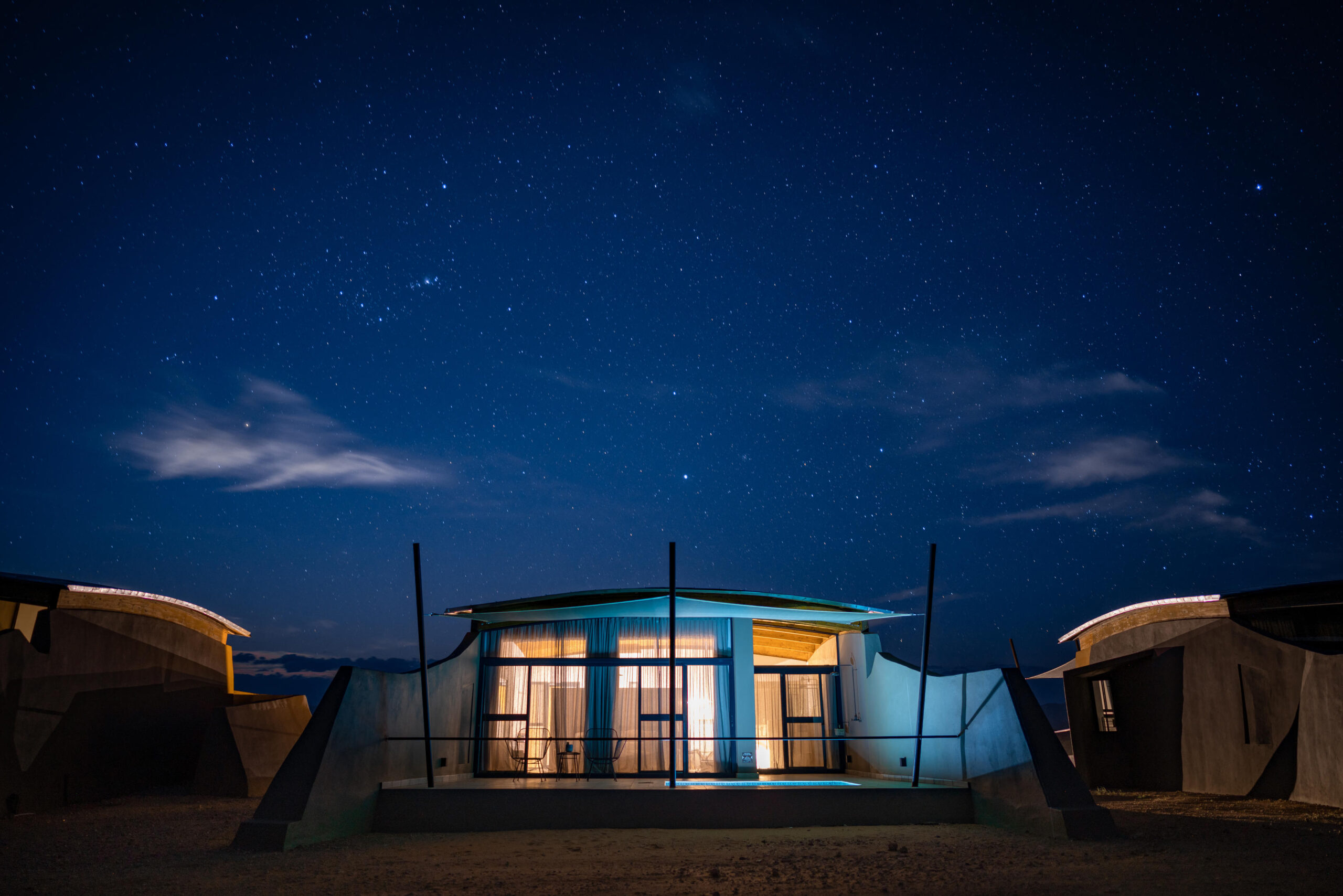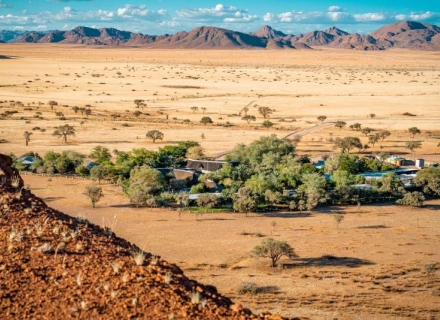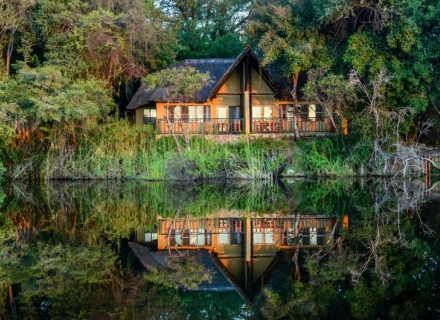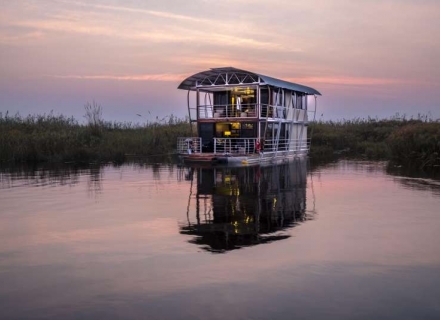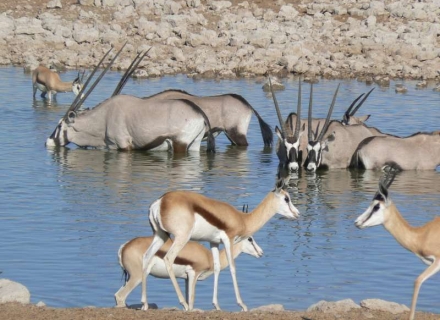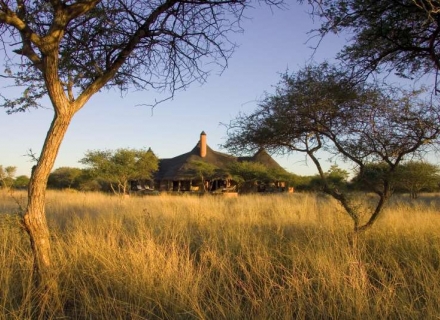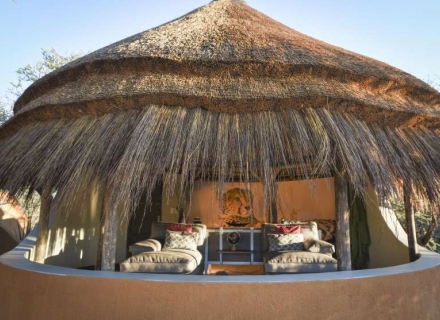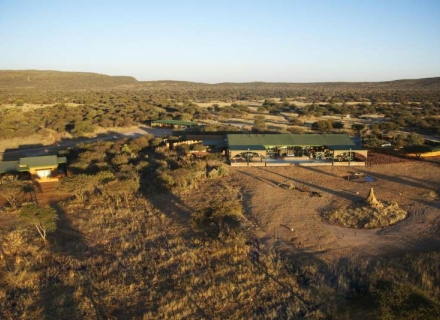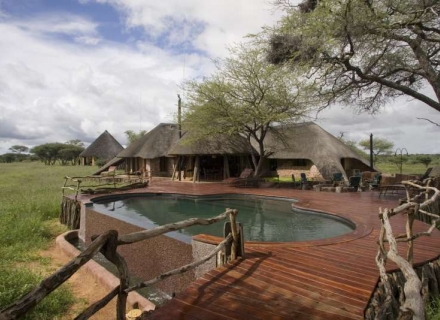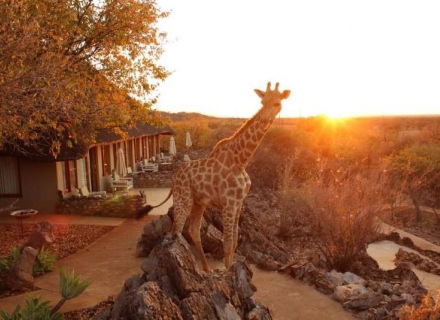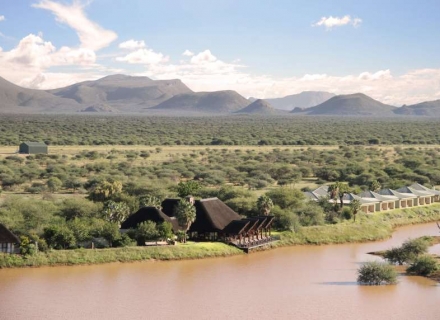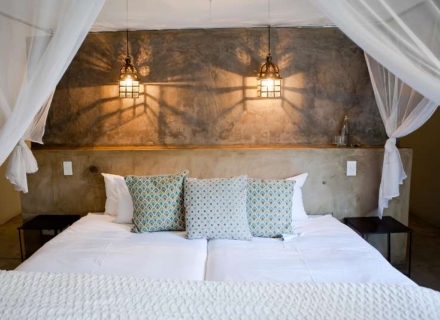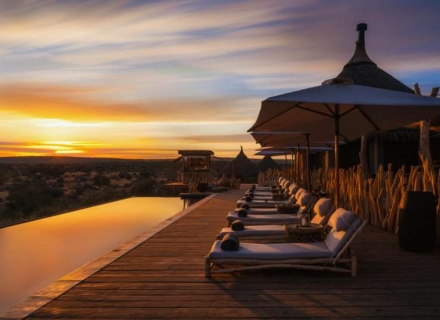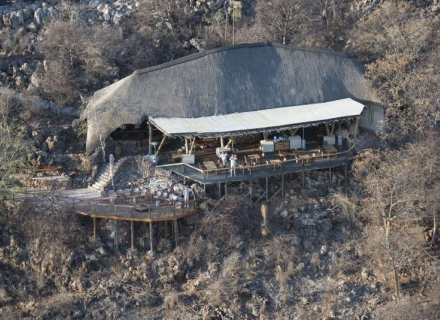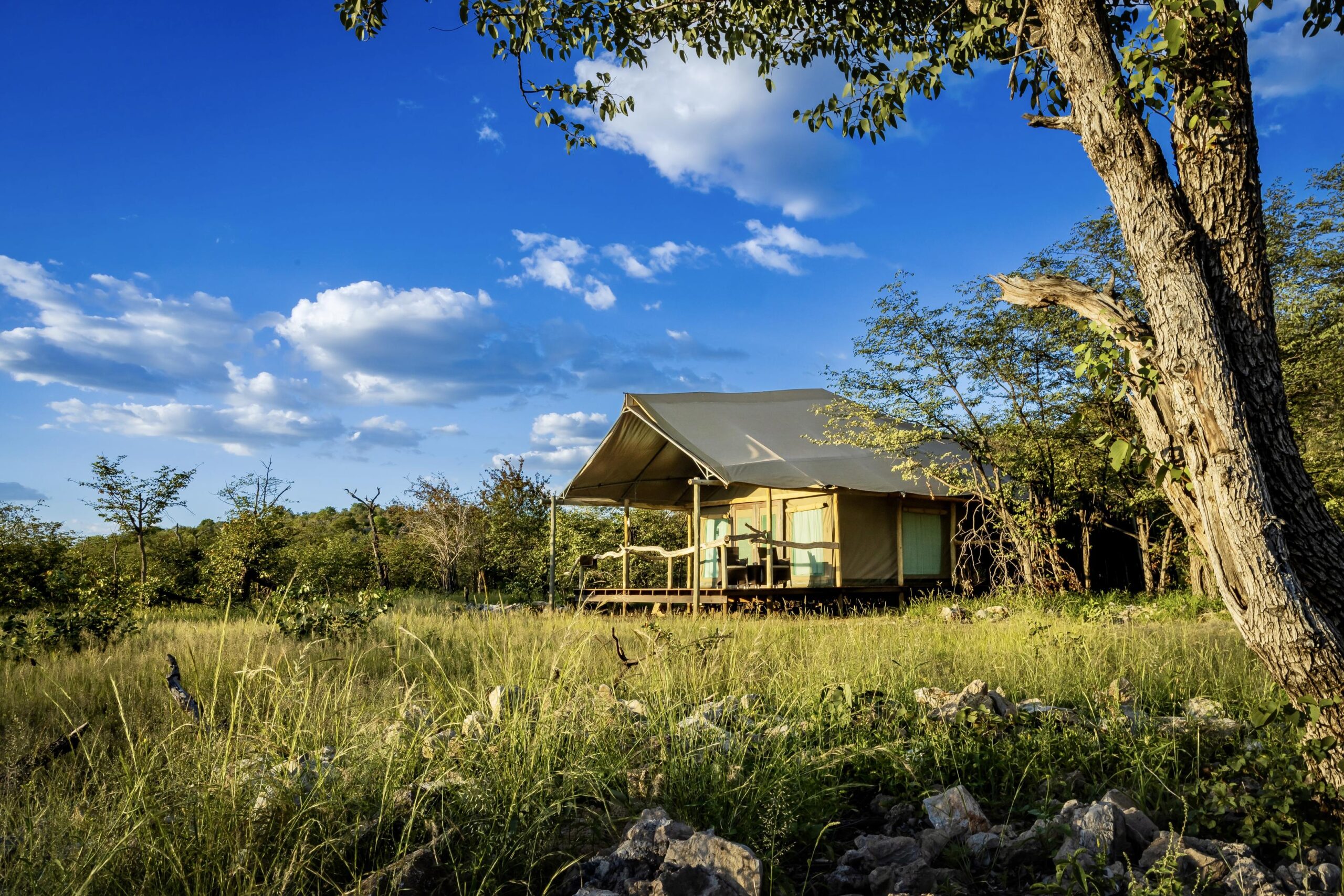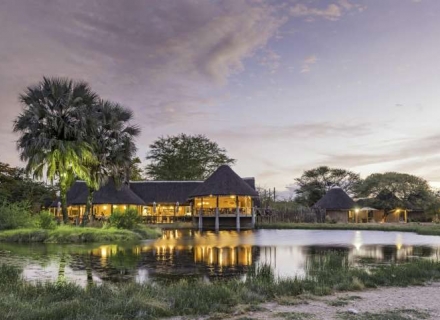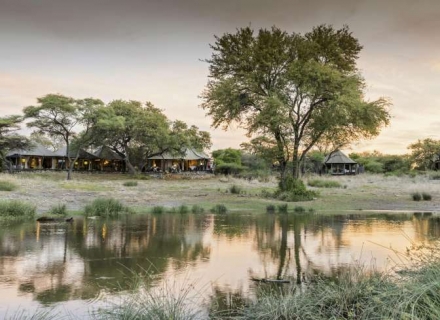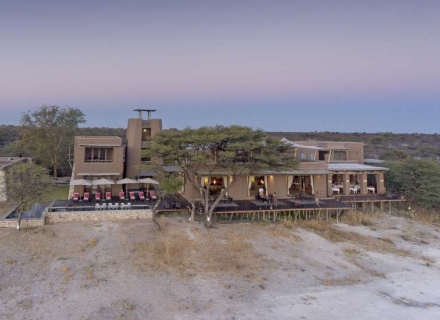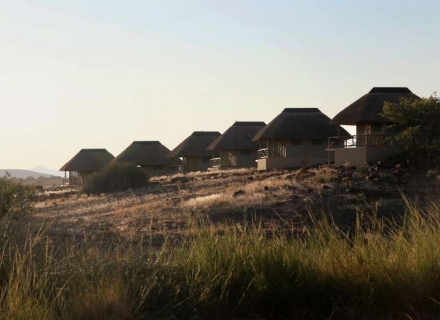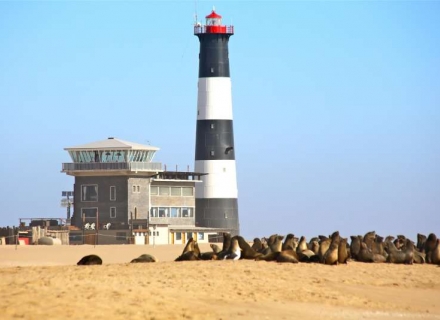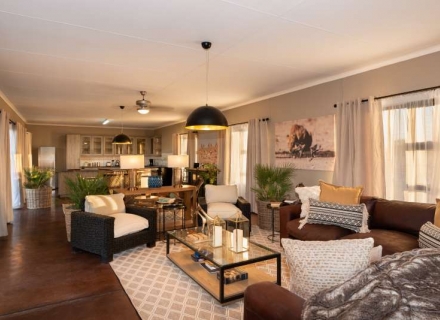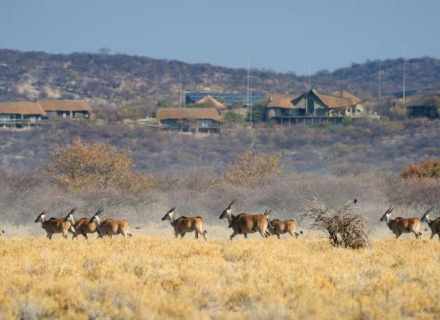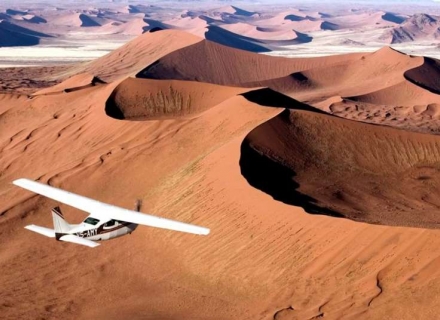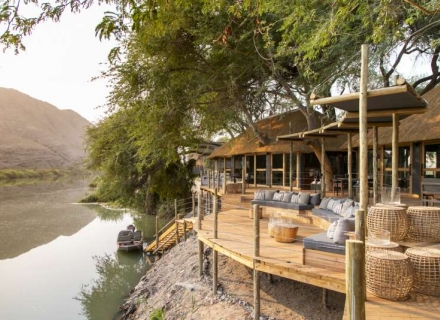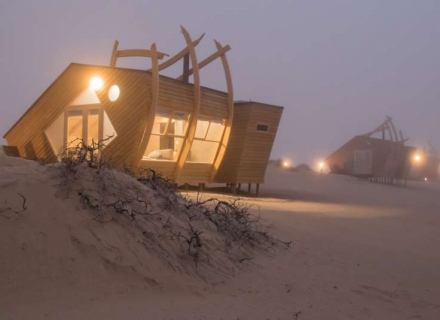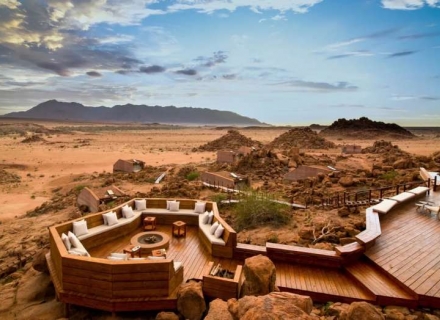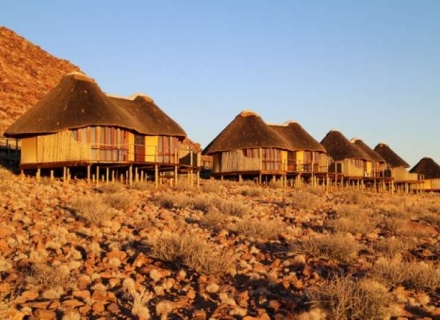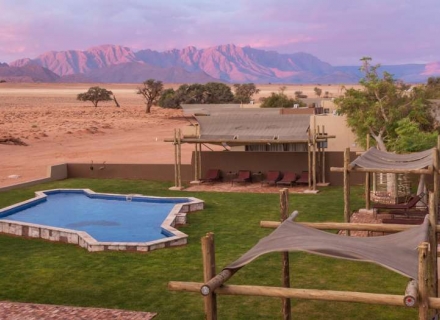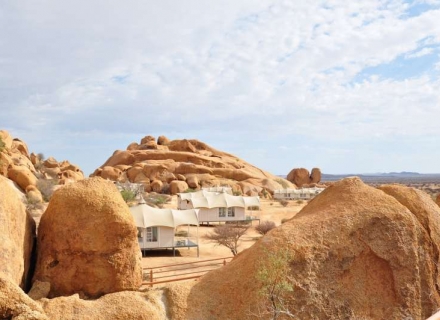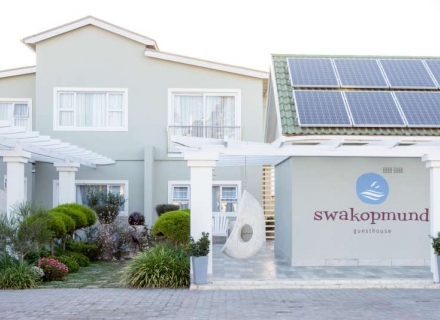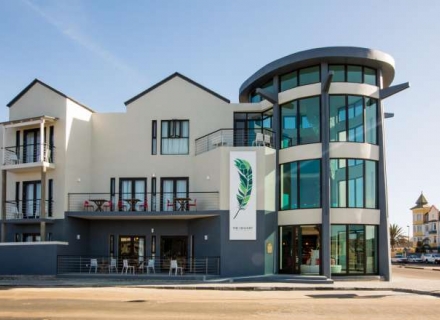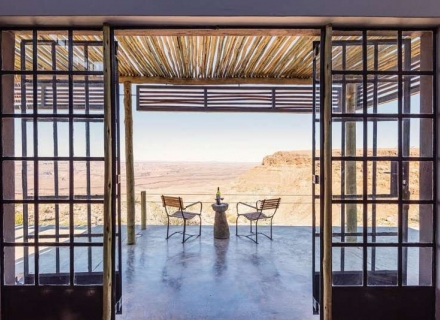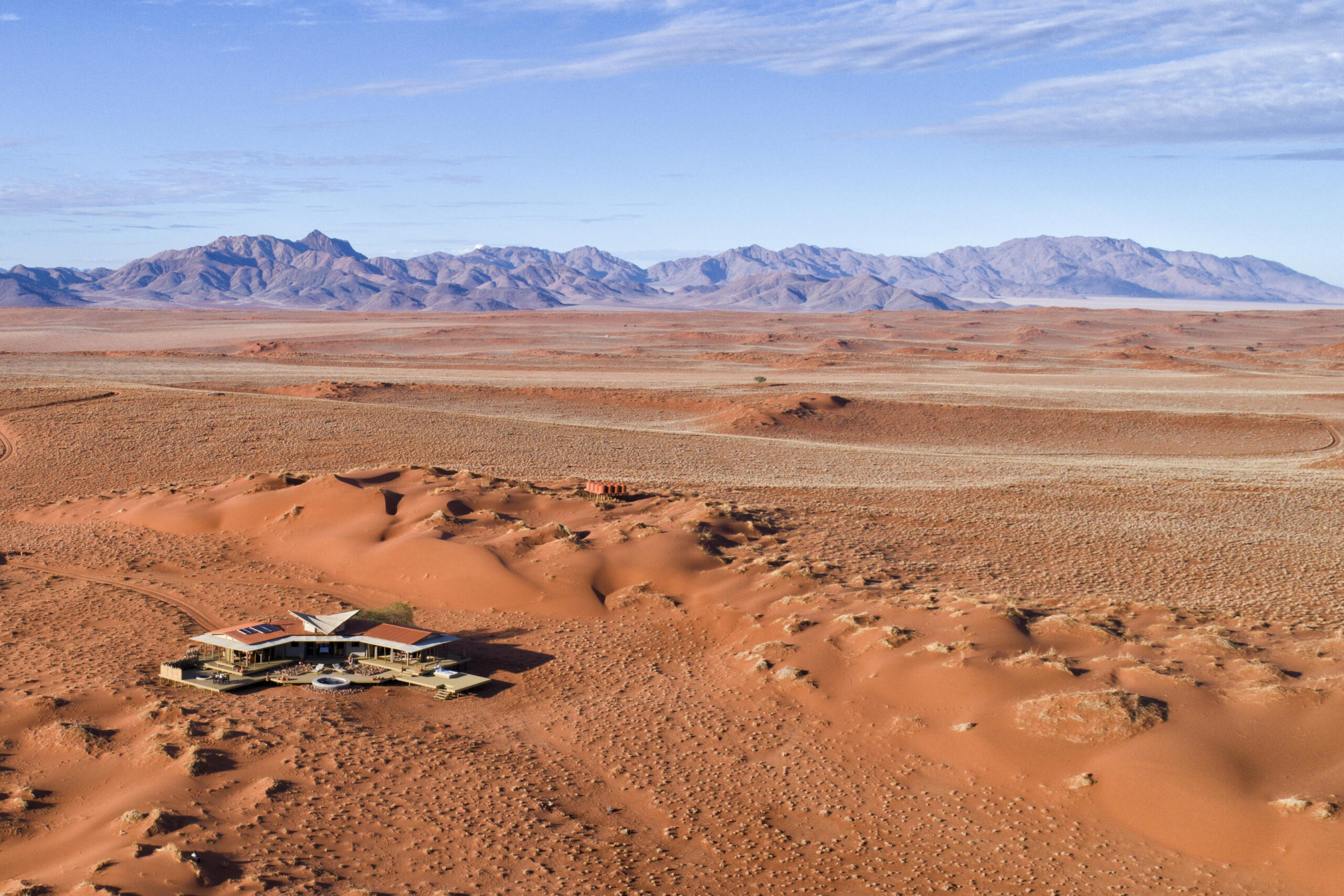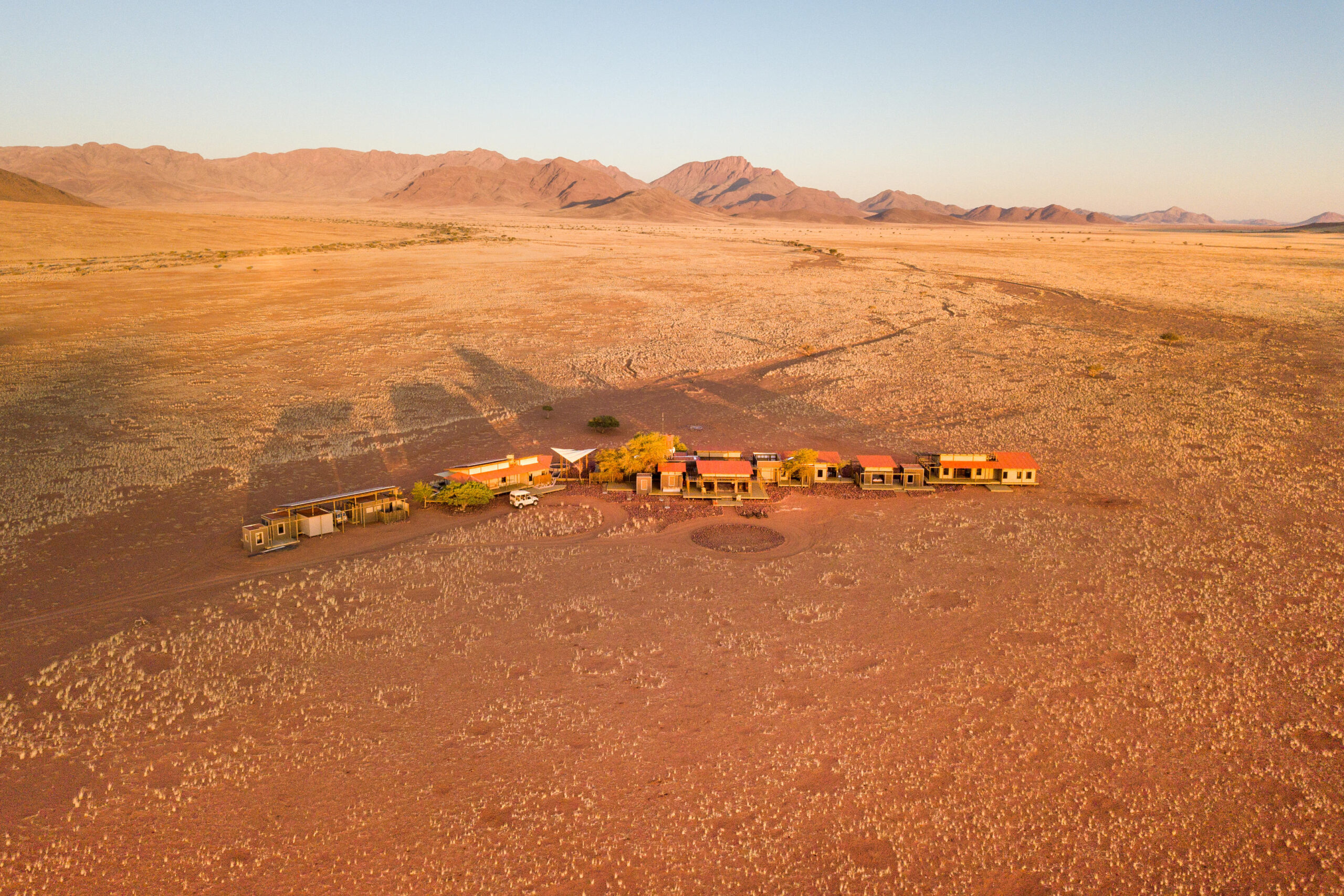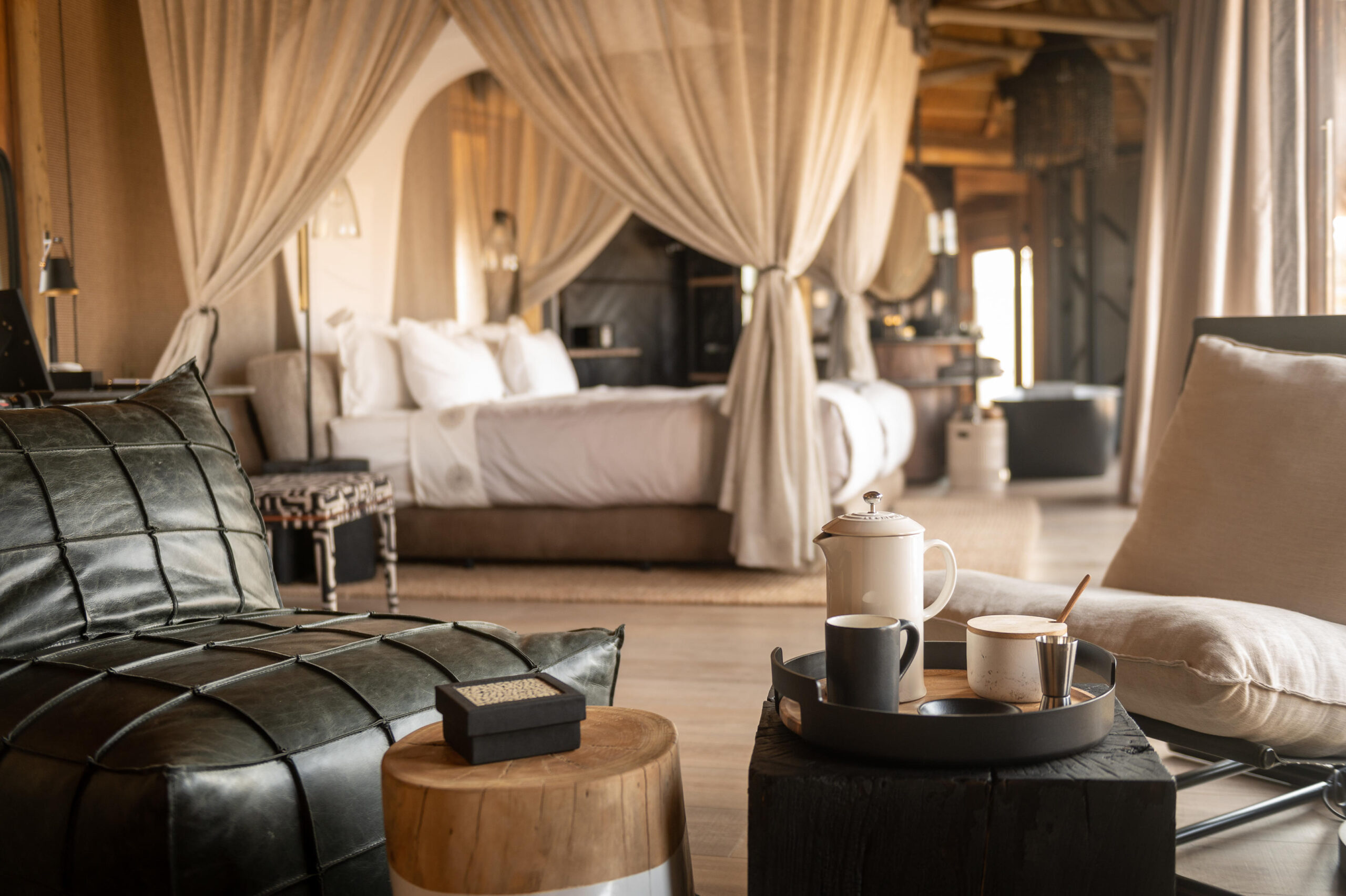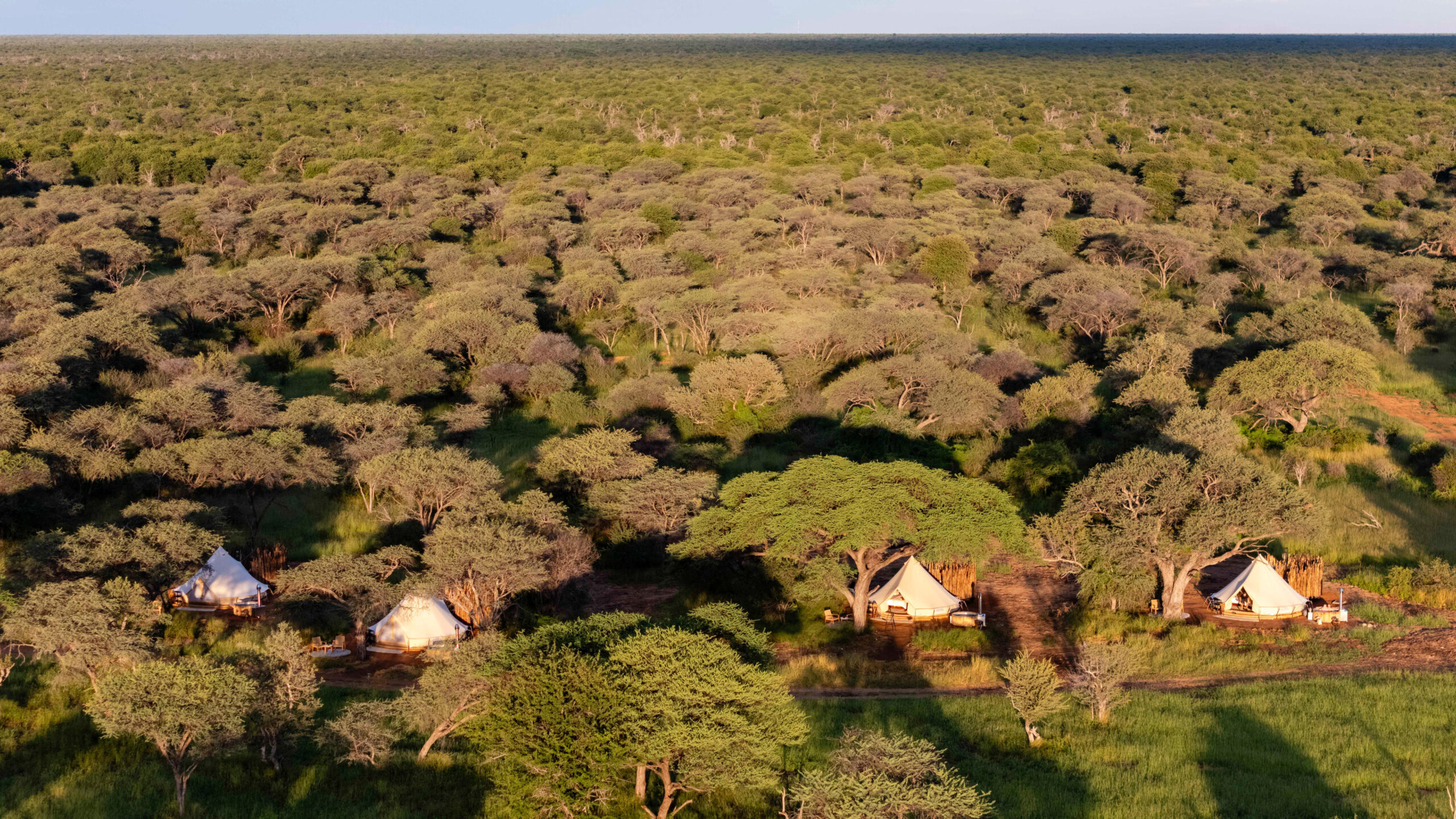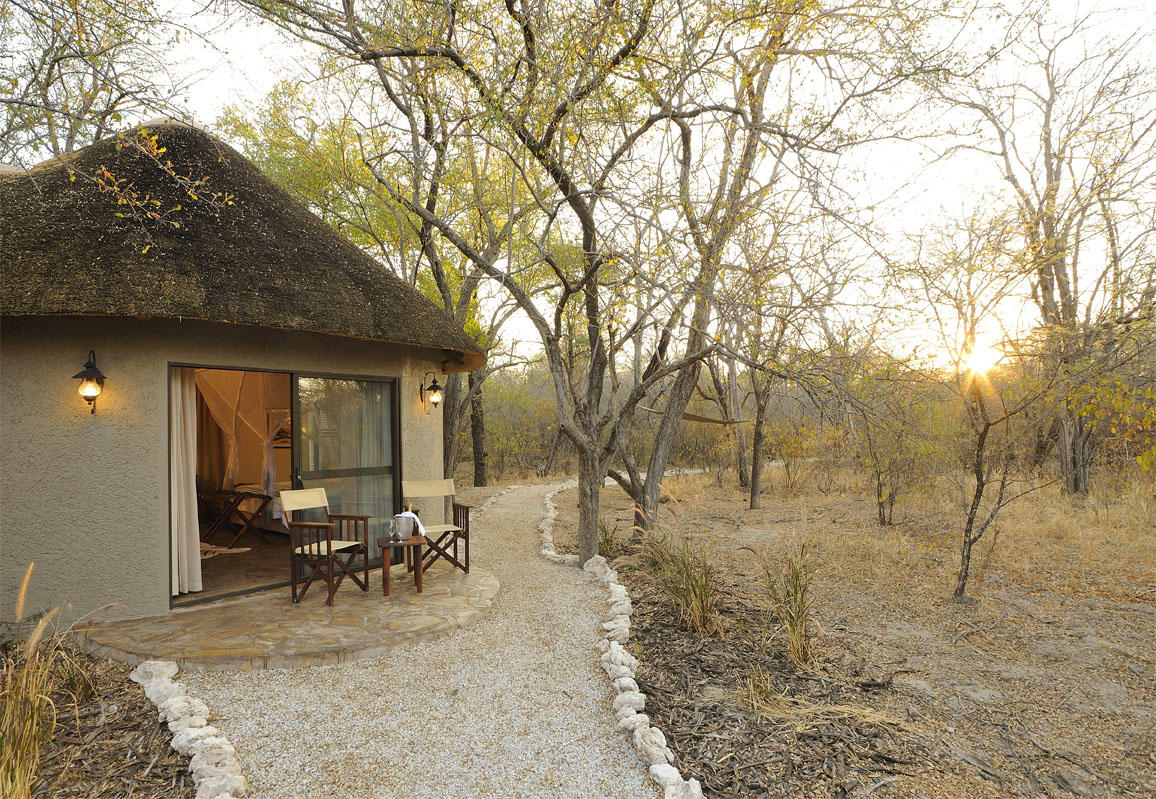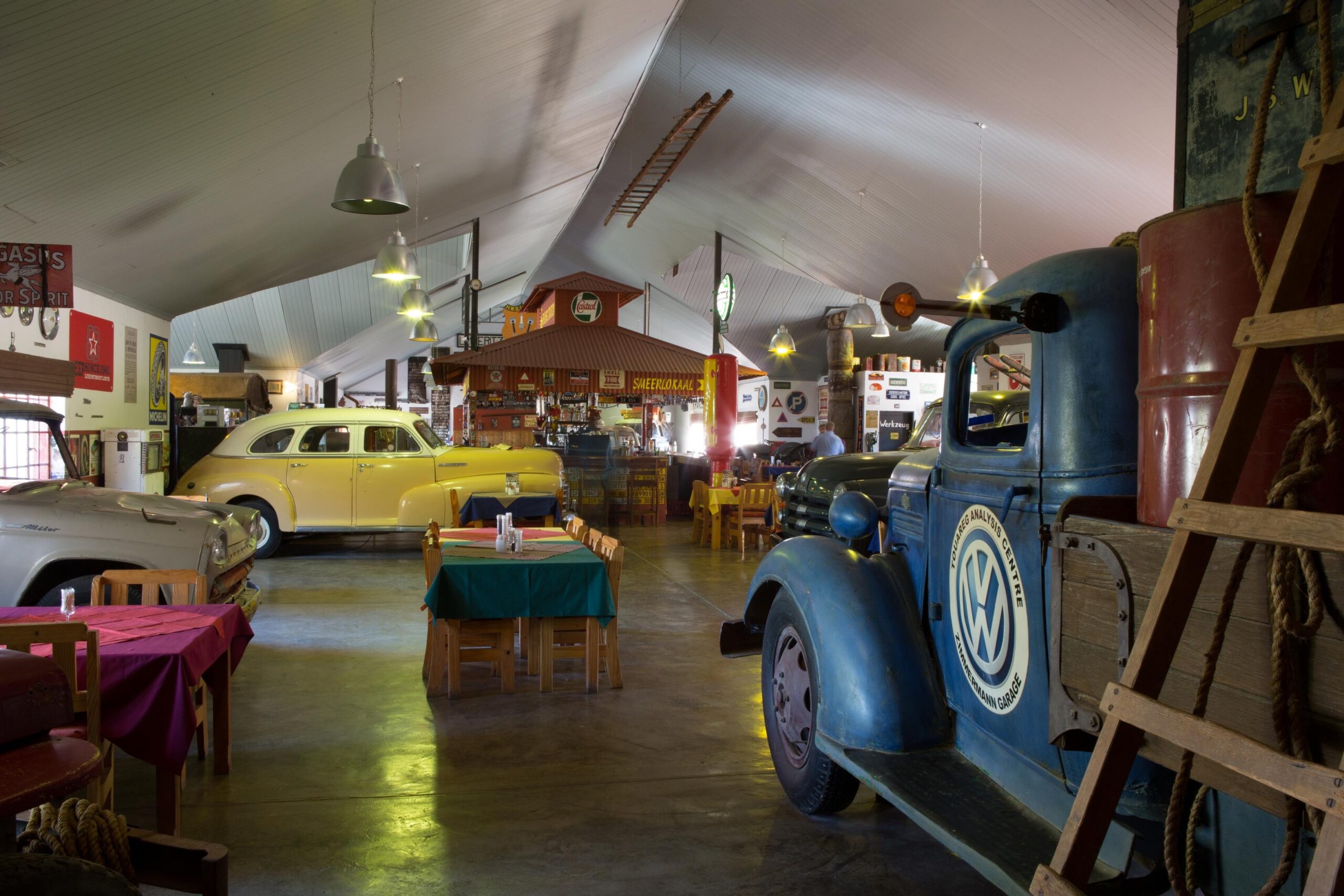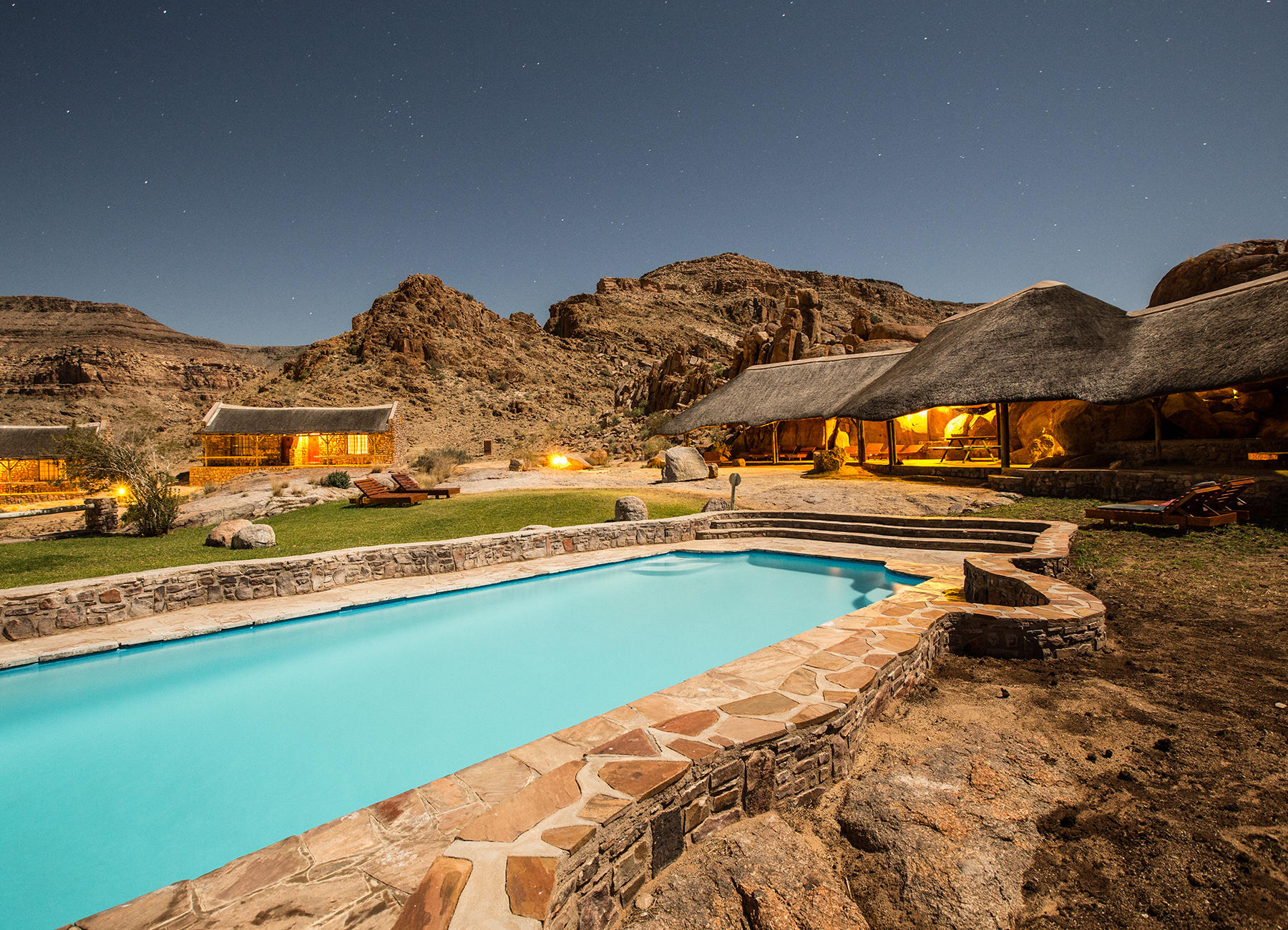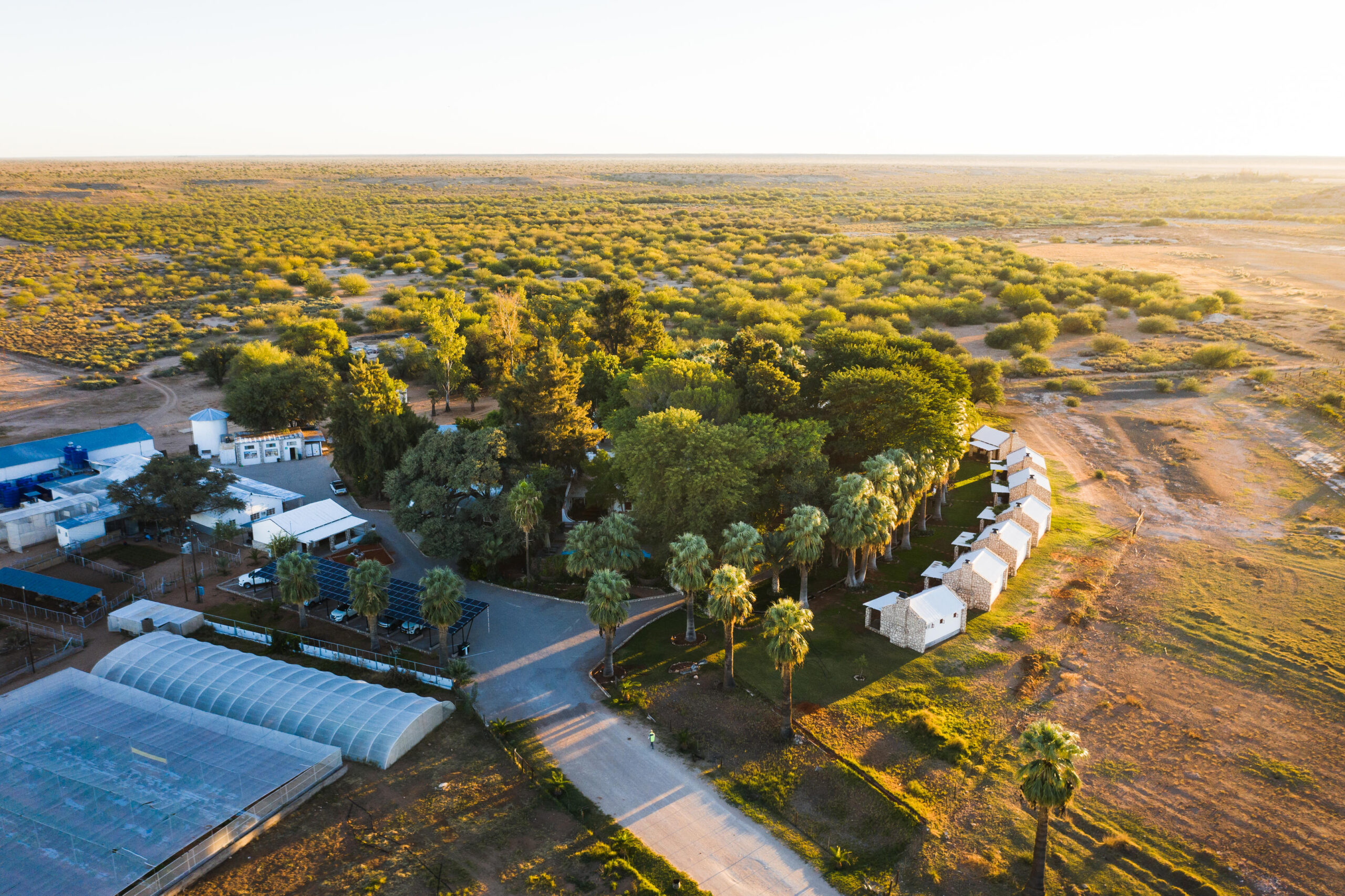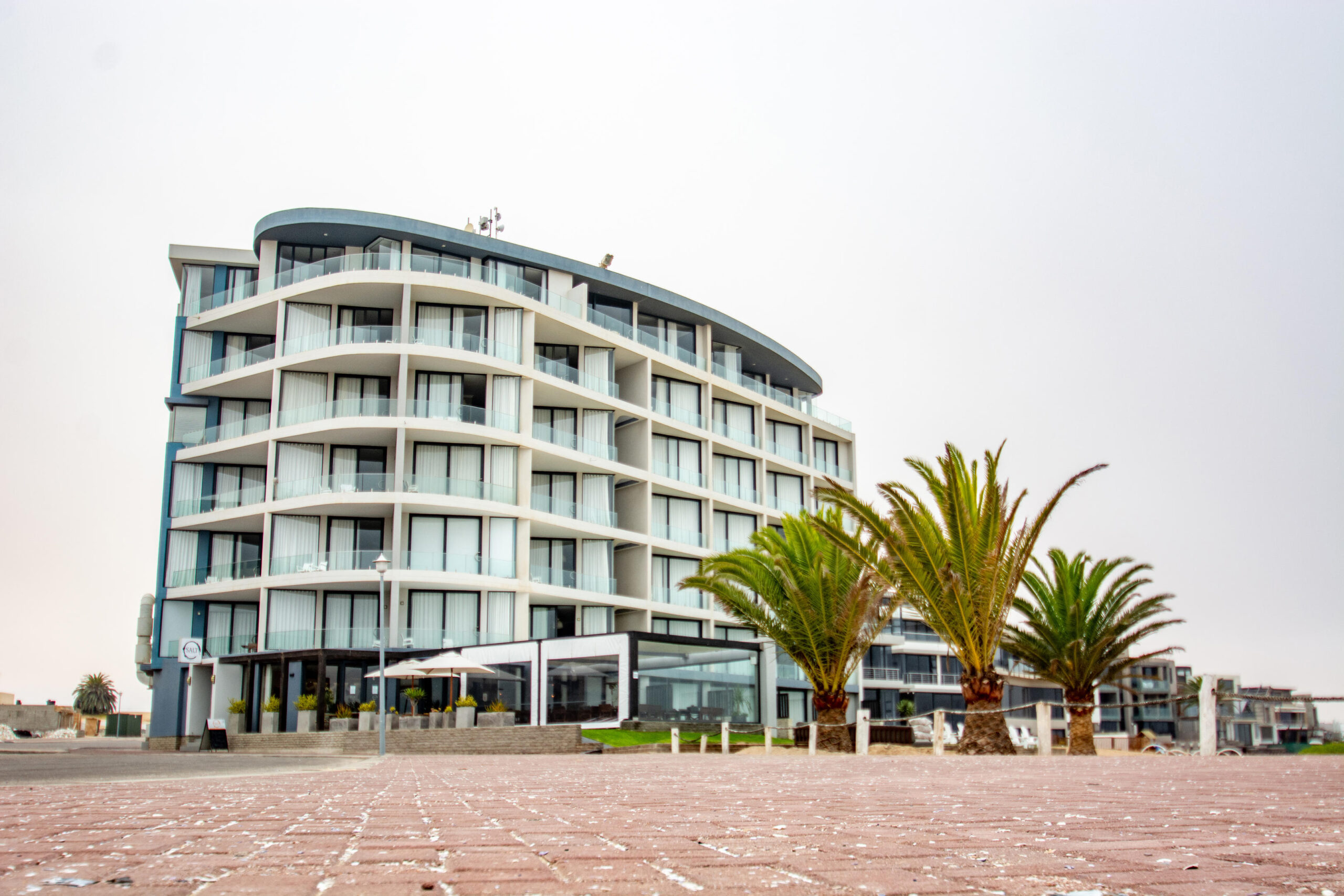DAMARALAND CAMP – TORRO CONSERVANCY – KUNENE – NORTH WEST NAMIBI
Damaraland Camp is a luxury tented camp situated in the Huab River Valley in one of the best wilderness areas in Namibia. The camp looks out over endless vistas across stark plains, ancient valleys and a stunning ochre-purple mountain backdrop.
The camp has just 10 large, ensuite adobe-style thatched units (including a family unit) which are raised off the ground and have walk-in dressing areas and a large deck in front to sit and enjoy the desert. The spacious main area has a swimming pool, and in the evening you can sit around the campfire and enjoy stargazing before dinner in the open air boma.
Damaraland Camp is the result of an award-winning partnership between Wilderness Safaris and the local Torra Conservancy and visits to the nearby farmstead allow guests to see this. Other activities include nature drives, guided nature walks and visiting ancient San rock art and geographical formations.
LOCATION
Damaraland Camp is located on the north face of the Haub River Valley around 90 km from Torra Bay and the camp is set in the private Torra Conservancy within the Kunene region in north-west Namibia.
Access is either by road transfer, self-drive or light aircraft flight.
CAMP
The camp has 10 large, tented rooms under thatch including a family room which has two bedrooms each with its own ensuite facilities and outdoor showers. The tents are valley-facing with wonderful views of the mountain from a private, shaded veranda. The bathroom walls have a rugged finish resembling local village clay walls.
The entire room and bathroom is mosquito proof and has wooden frames and doors with mesh inserts. Rooms have open plan ensuite facilities with a toilet, double vanity basin and shower, mosquito net, tea and coffee making facilities, Olympus photographic equipment, writing desk and chair, ottoman, easy chair, luggage rack and an electronic safe.
Bath robes, liquid soap, body wash, shampoo and conditioner, body lotion, room spray, insect repellents, washing powder (for smalls), sewing kit, shower caps, cotton-tip swabs, cotton balls, tissues dispensers, umbrella and laundry bag are supplied in each tent.
22V multi-plug adaptor charging facilities available in tents to charge mobile devices – not suitable for hairdryers – and WIFI is provided on a complementary basis in the tents. Please note that the rooms are not air-conditioned – a ceiling fan is provided in all the rooms.
Solar panels and generators with battery backup generate all the power in this camp. Fans and lights in rooms powered by 12V solar power. Additional charging facilities (available on request) for the use of sleep apnoea machines.
Gravel pathways link the tents to the main area which is on a raised wooden deck and has a thatched roof housing a large open living area with dining area and bar. Next to the bar is a swimming pool with shaded lounging area and the camp has an open fireplace under the stars for pre-dinner drinks and stargazing, a curio cupboard, a reading area with a supply of reference books and a traditional boma for outdoor dining.
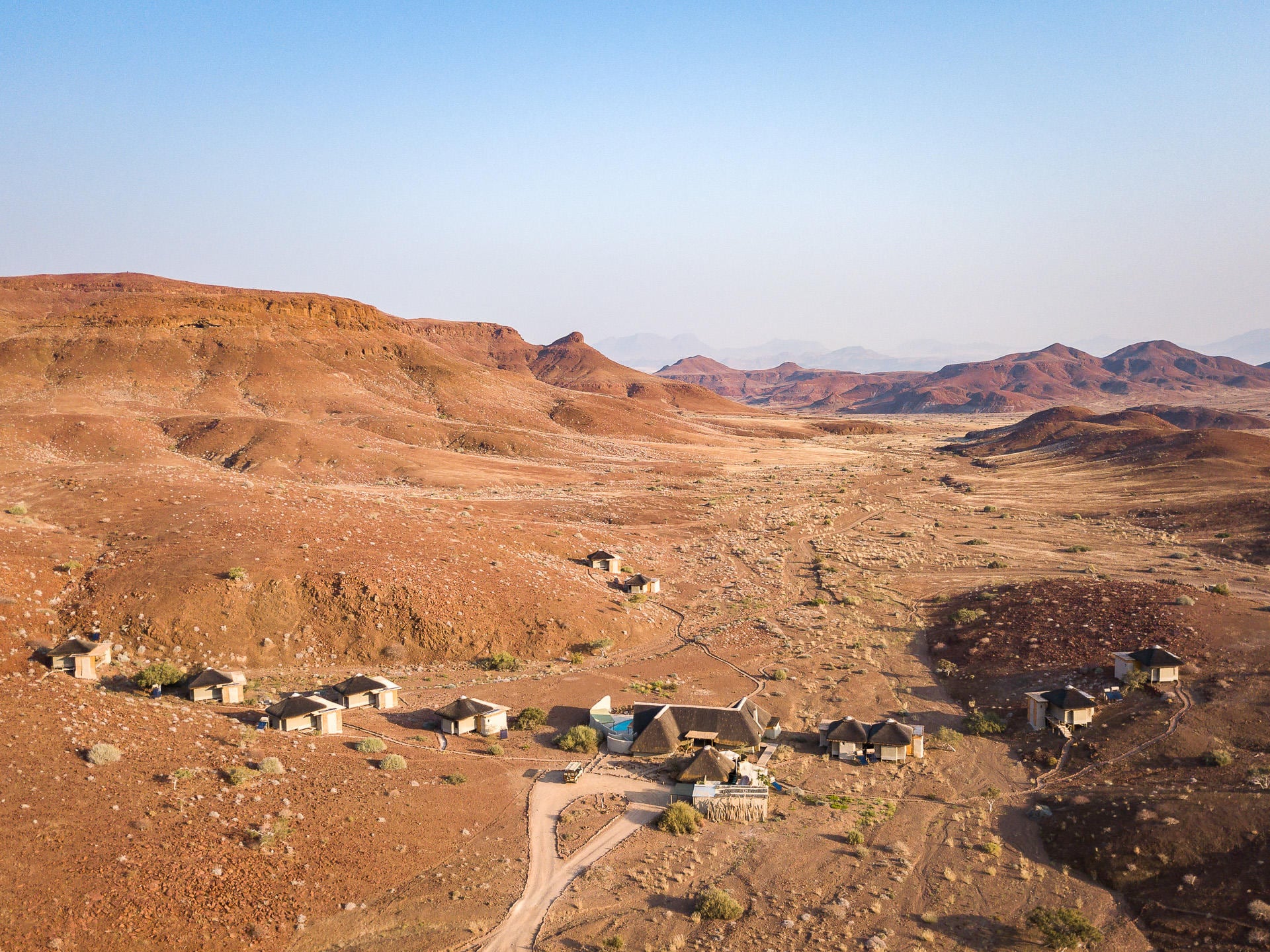
ACTIVITIES AND WILDLIFE
Damaraland Camp in the Torra Conservancy exists within one of the driest, most desolate regions in all of Africa. In this arid environment the ceaseless processes of life revolve around harnessing the near non-existent water in the most economical way possible.
Obviously this scrub landscape cannot support vast, concentrated herds of wildlife, but it nevertheless boasts a variety of desert-adapted species around Damaraland Camp. The Torra Conservancy supports healthy populations of rare desert-adapted elephant and some black rhino. Gemsbok (oryx), kudu, springbok, Hartman’s mountain zebra, southern giraffe, lion, cheetah, and spotted and brown hyaena also live in the area.
Birding is excellent with over 240 species recorded in the Torra Conservancy. Raptors include martial eagle, lappet-faced vulture and pale chanting goshawk. The endemic Benguela long-billed lark is common on the rocky slopes here, its plaintive whistling call an evocative sound. Common camp visitors include pale-winged starling, mountain wheatear, Rüppell’s korhaan and Cape bunting. Guests could even startle foraging Namaqua sandgrouse between the tents. Along the dry Huab River with its large camelthorn trees, common scimitarbill, acacia pied barbet, Rüppell’s parrot and perhaps a roosting spotted eagle-owl can be found. Ephemeral pools in the Huab sometimes harbour black crake, South African shelduck, hamerkop and three-banded plover. Hoesch’s skink is a unique reptile find in this area.
Nature Drives – morning and afternoon nature drives reveal the dramatic scenery and fascinating wildlife of the region. Desert-adapted elephant are the highlight of the area, although the natural cycle of rainfall dictates the seasonal movements of wildlife along the Huab River.
Cultural Activities – learn about the unique heritage of the local peoples, which include Nama-Damara, Herero, Owambo, and the displaced Riemvasmaakers of South Africa. This activity allows you to respectfully engage with these communities and it also includes a visit to the local Bergsig School.
Guided Nature Walks – learn more about the ancient geological past and present of Damaraland as well as about the unique plants, birds and reptiles that have superbly adapted to this arid area.
Rock Art Excursions – Damaraland is world-famous for its ancient rock art; guests on stays of three nights or more can take a day drive to visit some of these remains and marvel at the artists of ages past.
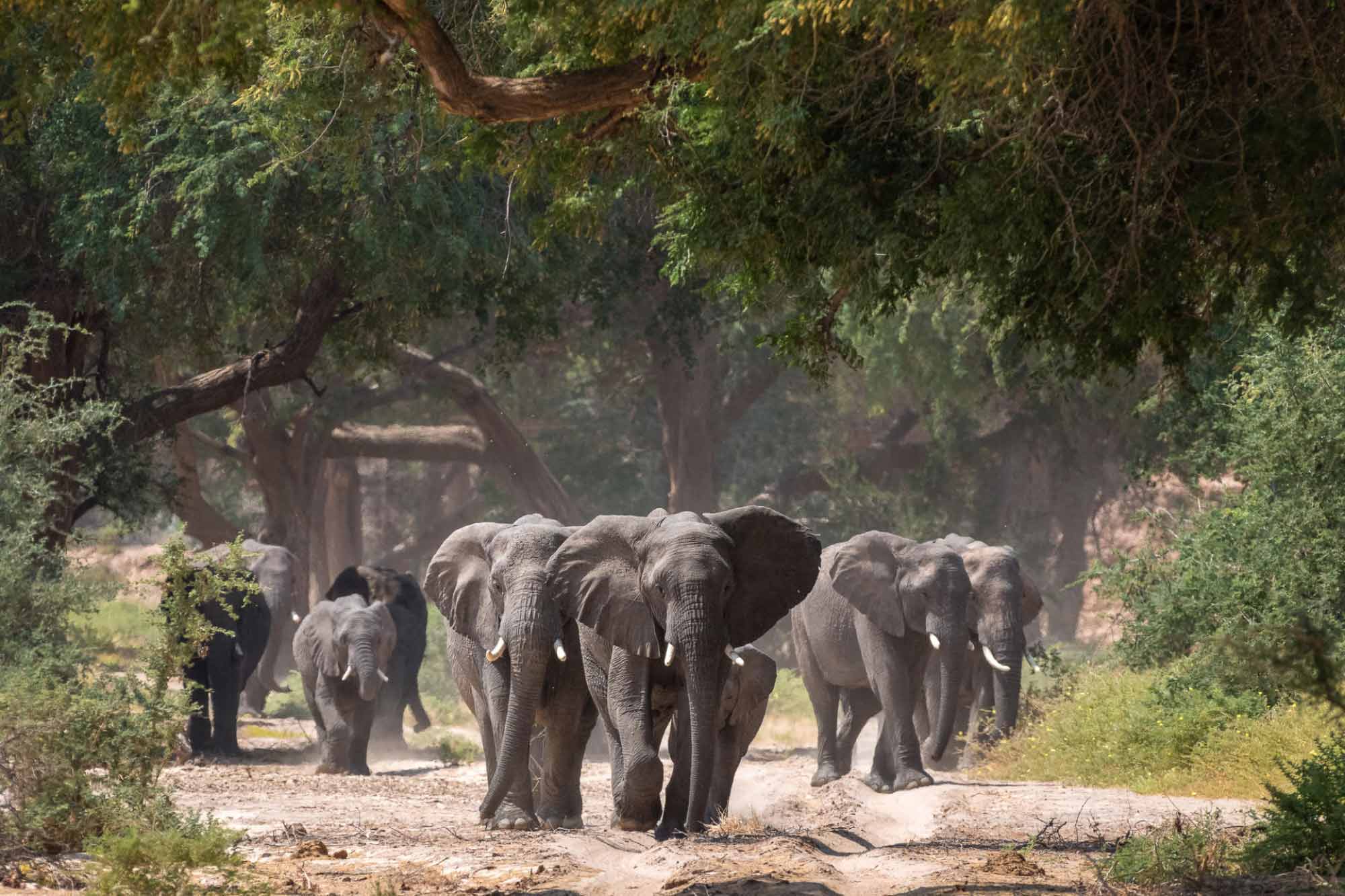
GIVING BACK
Wilderness Safaris and the Torra community in Damaraland have formed a successful partnership, with the community acting as landlord. This resulted in the 352 000-hectare (869 000-acre) Torra Conservancy being proclaimed – the first community conservancy in Namibia. Desert-adapted wildlife is flourishing again and poaching has decreased substantially.
The camp is powered by a hybrid system, combining a diesel-powered generator that charges a bank of batteries, which in turn supplies part of the camp with electricity through an inverter. Thanks to this the generator only needs to operate for eight hours a day. Each guest tent has its own small solar panel and inverter as a solar-powered geyser to provide hot water.
Wastewater is treated in a Trickle Plant ensuring that the water is clean before being allowed to enter the natural environment. In order to reduce our use of bottled water, reverse osmosis filtration is done on site to provide guests with high-quality drinking water. Damaraland Camp is managed and monitored against very strict in-house environmental standards so only approved eco-friendly detergents and chemicals are used.
Pack for a Purpose.
DAMARALAND CAMP IS OPEN ALL YEAR ROUND
THE CAMP WELCOMES FAMILIES WITH CHILDREN AGED 6 YEARS AND OLDER
FAMILIES WITH CHILDREN 6 – 12 YEARS ARE REQUIRED TO BOOK AND PAY FOR PRIVATE ACTIVITIES
THE MINIMUM AGE FOR WALKING ACTIVITIES IS 13 YEARS AND 16 YEARS FOR RHINO APPROACHING ON FOOT
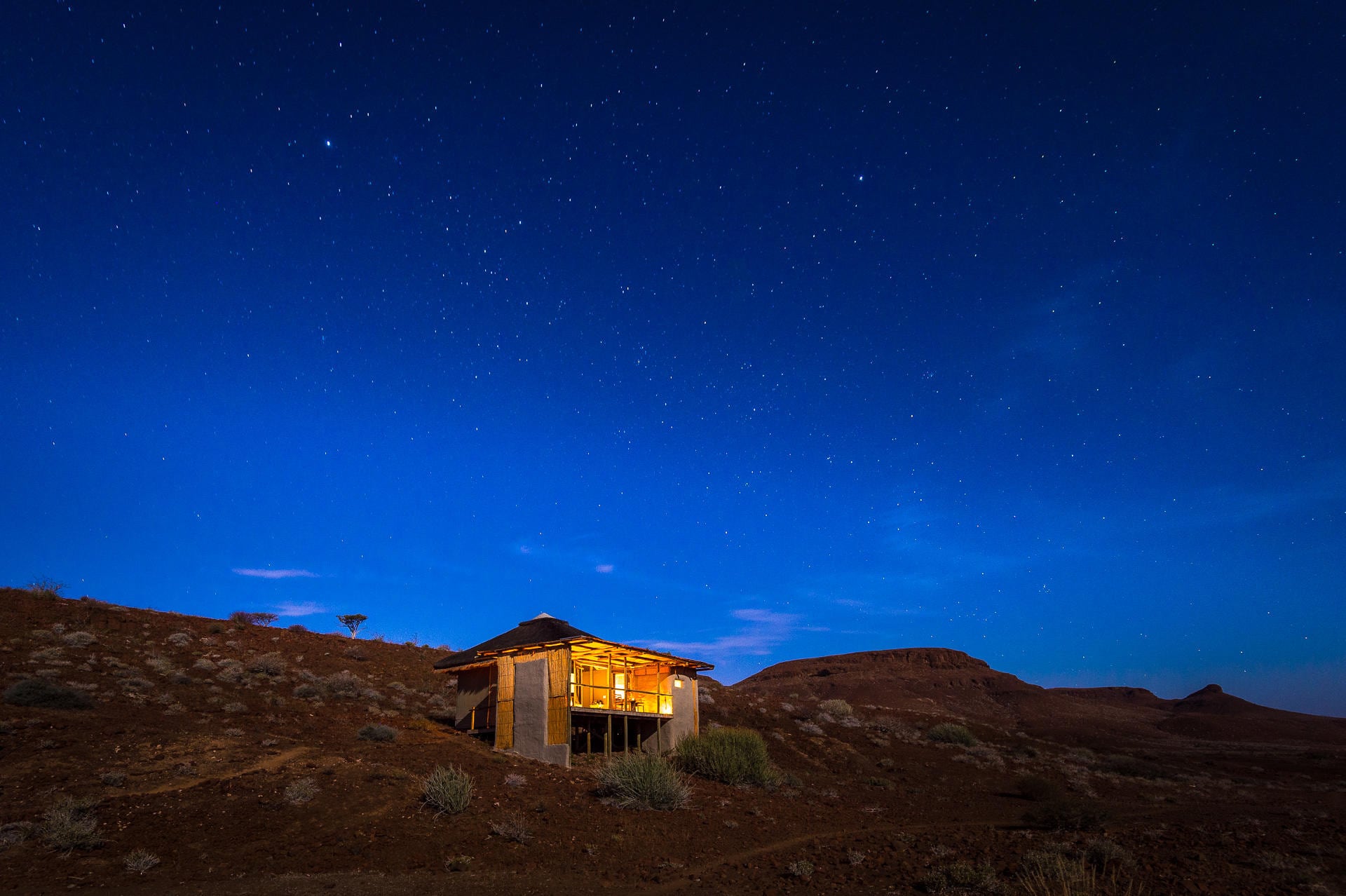
Call +44 1984 667420 or Email sue@trackssafaris.co.uk
Our expert staff are on-hand, happy to assist with any enquiry you have.

